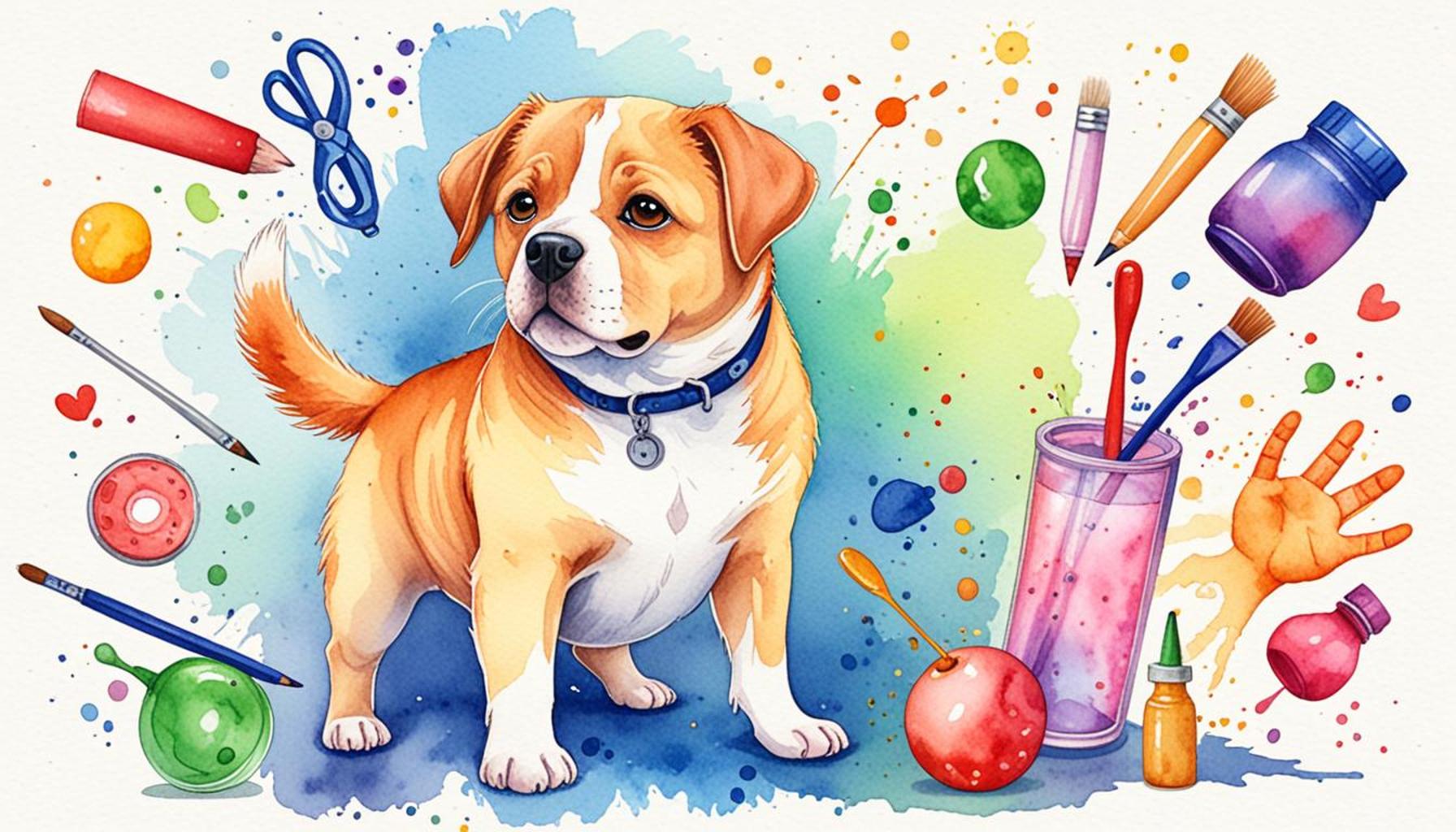Tips for Training Pets with Special Needs

Understanding the Challenges
Training pets with special needs can often feel like a daunting task for many pet owners. These pets may require unique approaches that differ significantly from conventional training methods, making it essential for trainers and owners alike to adapt their strategies accordingly. Recognizing the individual challenges faced by these animals is crucial to fostering a rewarding bond and ensuring their well-being.
Types of Special Needs
Special needs can vary widely among pets, reflecting a diverse range of physical, psychological, and medical conditions. Some common categories include:
- Physical disabilities: This can include injuries, mobility issues, or conditions like arthritis that affect a pet’s movement. For example, a dog with a knee injury may need to learn commands that accommodate their reduced range of motion, such as sitting down instead of jumping.
- Behavioral problems: Pets may exhibit anxiety or fear-based issues that stem from past traumas or lack of socialization. A cat that hides at the slightest noise can benefit from gradual exposure to different environments, helping to build their confidence over time.
- Medical conditions: Certain conditions, such as cognitive dysfunction syndrome or other illnesses that affect cognition or learning, require specialized training techniques. Dogs with Alzheimer’s-like symptoms may struggle with memory and consistency, necessitating patience and adaptive strategies.
Techniques to Consider
Utilizing tailored training strategies can significantly enhance the learning experience for pets with special needs. Here are some effective techniques that can be implemented:
- Positive reinforcement: Reward-based training not only encourages desired behaviors but also boosts the pet’s self-esteem. For instance, using treats, praises, or toys as rewards when a pet successfully follows a command can make the learning process enjoyable and effective.
- Consistency and routine: Establishing a predictable schedule helps alleviate anxiety, creating a sense of security for pets. Regular feeding, exercise, and training times enable pets to better anticipate their owner’s actions, which can be incredibly beneficial for those dealing with fear-based issues.
- Visual and auditory cues: Adapting communication can facilitate understanding for pets with hearing impairments or visual challenges. Hand signals combined with verbal commands can help create clarity, ensuring that dogs and cats feel engaged and informed during training sessions.
Why It Matters
Training pets with special needs not only improves their quality of life but also strengthens the relationship between pet and owner. Through patience and dedication, owners can unlock their pet’s potential, paving the way for a harmonious environment where both can thrive. This journey requires commitment but leads to extraordinary relationships that enrich our lives.
As you embark on this adventure, you will discover strategies that bring out the best in your special pet. The joy experienced in overcoming challenges and enhancing their ability to engage with the world is immeasurable. By exploring these tips, you will appreciate the unique and extraordinary joy these special companions bring to our lives and how rewarding the training process can be when done thoughtfully and lovingly.
DIVE DEEPER: Click here to discover the benefits of a natural diet for your dog</
Tailoring Techniques for Individual Needs
When it comes to training pets with special needs, understanding their unique requirements is underscored by a critical principle: tailoring training techniques to the individual pet’s challenges. Just as no two pets are exactly alike, the training approach must be customized based on their specific conditions. Here are some distinct strategies to consider that can lead to successful training outcomes:
- Know Your Pet’s Triggers: Identifying what causes stress or anxiety in your pet is essential for effective training. For example, a dog that reacts to sudden loud noises may benefit from a gradual desensitization approach, where exposure to sounds is introduced slowly and in a controlled environment, allowing the pet to remain calm.
- Break Down Tasks: For pets facing cognitive challenges or physical limitations, breaking down commands into smaller, manageable steps can significantly enhance learning. For instance, teaching a dog to “come” may start with leash training and gradually advance to calling them from short distances, gradually increasing as their confidence builds.
- Utilize Interactive Toys: Engaging pets with special needs through interactive toys can stimulate learning and provide physical exercise. Puzzle toys are particularly beneficial as they challenge pets mentally while rewarding them for their problem-solving abilities, reinforcing positive behavior and engagement.
- Incorporate Professional Help: Sometimes, the guidance of a professional trainer, especially one skilled in working with special needs pets, can be invaluable. These professionals can offer personalized insights and techniques that align with your pet’s individual challenges, paving the way for efficient training.
Building Trust and Communication
Establishing a foundation of trust is paramount when training pets with special needs. Many of these animals come from backgrounds that may have caused anxiety, fear, or behavioral issues, so fostering an environment where they feel safe and understood is crucial for their development.
Effective communication plays a significant role in creating this trust. Using both verbal cues and visual signals tailored to the learning style of the pet is a recommended approach. For example, a dog with hearing impairments may respond better to hand signals rather than verbal commands. This dual approach not only addresses their specific needs but also encourages a more natural and fluid line of communication between pet and owner.
In the world of training, patience stands out as one of the most important virtues. Progress may appear slow at times, but celebrating small victories can lead to significant improvements over time. By understanding your pet’s limitations while simultaneously building their strengths, you will help unlock their potential for learning and adaptation.
These tips for training pets with special needs are designed to empower both the pet and the owner, ensuring that the journey is as fulfilling as it is beneficial. As you delve deeper into training practices, keep in mind the importance of empathy and understanding—qualities that create not only skilled pets but also happy and healthy companions.
| Training Technique | Description and Benefits |
|---|---|
| Positive Reinforcement | This technique involves rewarding desired behaviors with treats or praise, creating a motivating environment for pets with special needs. |
| Target Training | Utilizes a target stick to guide your pet towards specific actions, helping pets understand commands through visual cues tailored for their learning style. |
Incorporating these techniques into your training regimen can significantly improve interaction and communication with your special needs pet. Positive reinforcement not only establishes a strong bond but can also aid in overcoming behavioral challenges often exaggerated by disabilities. Similarly, target training allows pets to learn at their own pace, adapting strategies that cater to their unique needs. Exploring these methods can lead to transformational outcomes in your training journey, enhancing the quality of life for you and your pet.Additionally, consistency is key when working with pets that require additional care and attention. Providing a structured environment creates a sense of security that can be incredibly beneficial. Using repetitive commands and schedules ensures clarity and reinforces learning. Furthermore, integrating play into training sessions keeps your pet engaged and reduces anxiety, leading to a more enjoyable experience for both parties.Seek guidance from specialists or trainers who have experience with animals with similar challenges. Tailored plans can ensure that each interaction is productive and aligned with the specific needs of your companion. The journey of training pets with special needs can be fulfilling and deeply rewarding, creating mutual understanding and respect that lasts a lifetime.
DISCOVER MORE: Click here to learn about optimal pet nutrition
Maintaining Consistency and Positive Reinforcement
Consistency is a cornerstone in the realm of training pets with special needs. Animals thrive in environments where they can predict what will happen next, making a consistent routine essential. This includes adhering to a particular training schedule, using uniform commands, and sticking to training locations. For example, if you’ve established a command for “sit,” always use that specific word and tone in the same manner. Inconsistencies can create confusion and hinder learning.
Positive reinforcement is another critical component that fuels effective training. This method—rewarding desired behaviors with treats, praise, or play—helps reinforce the link between actions and outcomes, making the training process more enjoyable for pets with special needs. For instance, if your pet correctly responds to their name, offer a small treat or lots of affectionate praise. Over time, they will associate good behavior with positive experiences, which encourages them to repeat those actions.
- Use Variety in Rewards: Different pets respond to different rewards. For some, a tasty treat might be the best incentive, while others may be more motivated by toys or playtime. Experiment with various types of reinforcement to discover what your pet responds to most favorably.
- Keep Training Sessions Short: Pets, especially those with cognitive challenges, may struggle with prolonged attention spans. Aim for shorter training sessions of about 5 to 10 minutes, scattered throughout the day. Frequent, brief intervals can help maintain enthusiasm without overwhelming them.
- Adjust Expectations: It’s vital to adapt your expectations based on your pet’s capabilities. While one pet may master a command quickly, another may take weeks or even months. Focus on gradual progress, and celebrate each small success to build confidence.
Creating an Inclusive Environment
A truly supportive training environment is one where the pet feels secure. This can be particularly vital for pets with special needs, as their backgrounds often contribute to anxiety or fear. Creating a familiar space that is devoid of distractions can greatly help during training sessions. For instance, setting up a designated training area in your home can minimize disruptions from other pets or family members.
Incorporating familiar scents—such as the pet’s favorite blanket or toy—can also promote a sense of comfort. These tangible items can serve as powerful reminders of safety during training, enabling your pet to relax and focus better. Additionally, maintaining a clean and organized environment reduces the risk of accidents or overwhelm, especially for pets prone to sensory overload.
Advocacy and Education
Understanding your pet’s unique challenges also requires continuous education on both the condition itself and the best training practices available. Engaging with local pet support groups or online forums can not only provide additional strategies but also connect you with other pet owners who are navigating similar situations. Knowledge sharing within these communities can offer insights that contribute to improved training methodologies and techniques tailored to your specialized needs.
Furthermore, advocating for your pet’s specific requirements when interacting with trainers, veterinarians, or pet service providers ensures that their needs are met in all aspects of their care. For instance, if your pet has difficulty socializing with other animals, informing trainers of this challenge empowers them to modify their training plans accordingly.
By implementing these strategies and maintaining an informed, compassionate approach, the journey of training a pet with special needs can become a rewarding experience for both pet and owner. Ultimately, the focus remains on enhancing the lives of these extraordinary pets, ensuring they receive the love and training necessary to thrive.
DISCOVER MORE: Click here to learn about pet nutrition
Conclusion
Training pets with special needs requires a unique blend of patience, creativity, and understanding. As we explored throughout this article, the essentials involve creating a consistent training regimen, utilizing positive reinforcement, and maintaining a supportive environment that caters to the individual needs of your pet. The journey does not only enhance your pet’s skills but also strengthens the bond between you and your furry companion.
Moreover, it is crucial to recognize that each pet’s journey is different, marked by their distinct capabilities and challenges. By adjusting your expectations and celebrating even the smallest victories, you pave the way for a positive training experience that nurtures your pet’s self-esteem and encourages continuous learning. Engaging with the community through support groups can also unveil invaluable resources and shared experiences that enhance your knowledge base.
The overarching theme is advocacy—prioritizing your pet’s needs while ensuring they receive the appropriate care and specialized training from professionals. Whether you’re navigating behavioral issues or cognitive challenges, your efforts can significantly transform your pet’s life for the better.
Ultimately, the journey of training a pet with special needs is not just about imparting skills but about fostering a fulfilling connection that allows them to thrive in their own right. With compassion and dedication, you can provide your pet with the rich life they deserve, filled with love, joy, and purpose.


